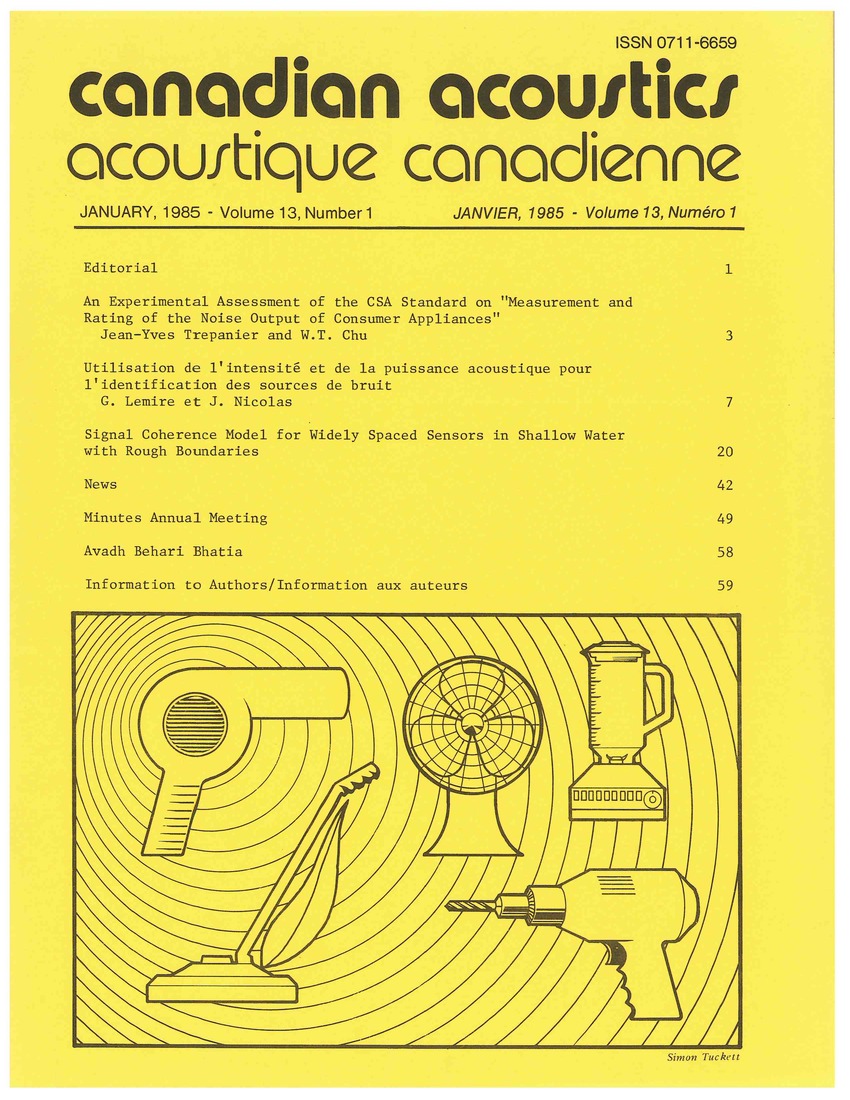Signal coherence model for widely spaced sensors in shallow water with rough boundaries
Keywords:
underwater sound, shallow water, rough boundaries, normal modes, waveguide, signal coherence, source-receiver rangeAbstract
A model based on normal modes has been developed to predict signal coherence for a sound source in a shallow water waveguide with rough boundaries. Deterministic amplitudes and phases are calculated from a normal mode model and random phase or amplitude fluctuations are added. The model assumes that the mode phase fluctuates as a result of the water boundary roughness and that the fluctuations have a degree of independence that may be chosen arbitrarily. This independence is intended to account for the effect of large sensor separations. Receivers may be in any configuration but the source is restricted to the limiting cases of motions that either maintain the source-receiver range constant or change it by many wavelengths during the coherence estimation period. When the source-receiver range is changing rapidly and the receivers are closely spaced, it is found that the signal coherence depends only on receiver separation, mode shape and mode excitation. For closely spaced sensors broadside configurations give consistently high signal coherence. However, for widely spaced sensors and/or sources that maintain a constant source-receiver range the roughness parameters can have a profound effect on coherence. It is also found that certain configurations may be used to isolate the effect on coherence. It is also found that certain configurations may be used to isolate the effect of the various model parameters, and hence may be used to measure these parameters experimentally.Additional Files
Published
How to Cite
Issue
Section
License
Author Licensing Addendum
This Licensing Addendum ("Addendum") is entered into between the undersigned Author(s) and Canadian Acoustics journal published by the Canadian Acoustical Association (hereinafter referred to as the "Publisher"). The Author(s) and the Publisher agree as follows:
-
Retained Rights: The Author(s) retain(s) the following rights:
- The right to reproduce, distribute, and publicly display the Work on the Author's personal website or the website of the Author's institution.
- The right to use the Work in the Author's teaching activities and presentations.
- The right to include the Work in a compilation for the Author's personal use, not for sale.
-
Grant of License: The Author(s) grant(s) to the Publisher a worldwide exclusive license to publish, reproduce, distribute, and display the Work in Canadian Acoustics and any other formats and media deemed appropriate by the Publisher.
-
Attribution: The Publisher agrees to include proper attribution to the Author(s) in all publications and reproductions of the Work.
-
No Conflict: This Addendum is intended to be in harmony with, and not in conflict with, the terms and conditions of the original agreement entered into between the Author(s) and the Publisher.
-
Copyright Clause: Copyright on articles is held by the Author(s). The corresponding Author has the right to grant on behalf of all Authors and does grant on behalf of all Authors, a worldwide exclusive license to the Publisher and its licensees in perpetuity, in all forms, formats, and media (whether known now or created in the future), including but not limited to the rights to publish, reproduce, distribute, display, store, translate, create adaptations, reprints, include within collections, and create summaries, extracts, and/or abstracts of the Contribution.


